AWS Cloud Practitioner CLF-C02
Technology Part Three
AWS Workspaces Demo
Welcome, Cloud Practitioners! In this demo, we will guide you through the process of setting up and using Amazon WorkSpaces—an AWS end-user computing service that provides persistent virtual desktops within the cloud. You can access these desktops via a dedicated client or through a web interface.
Region and Directory Setup
We start our demo in the Northern Virginia region as Amazon WorkSpaces is not supported in all regions (for example, Ohio). When you click "Create a new WorkSpace," you'll be guided through several configuration steps. One of the initial steps is selecting a directory. In this demo, a simple Active Directory—functionally similar to LDAP—is used. This directory is registered with multiple subnets (for instance, us-east-1a and us-east-1b) and includes subnet details with IDs ending in c6, b7, c6, 2, and e2.
All necessary features are active, such as WorkDocs, internet access, and local administrator rights. Additionally, web access and Linux client support are enabled. This directory was pre-configured for Active Directory management, which simplifies user administration.

Creating a Workspace
The next step is to select the appropriate directory containing your users and click Next. In this phase, an additional user is created specifically for the WorkSpace. For demonstration purposes, the user is named "Amazon Linux" (abbreviated as AL2) with the email "[email protected]". Note that many email providers ignore text after the plus sign, so the email still routes to [email protected].
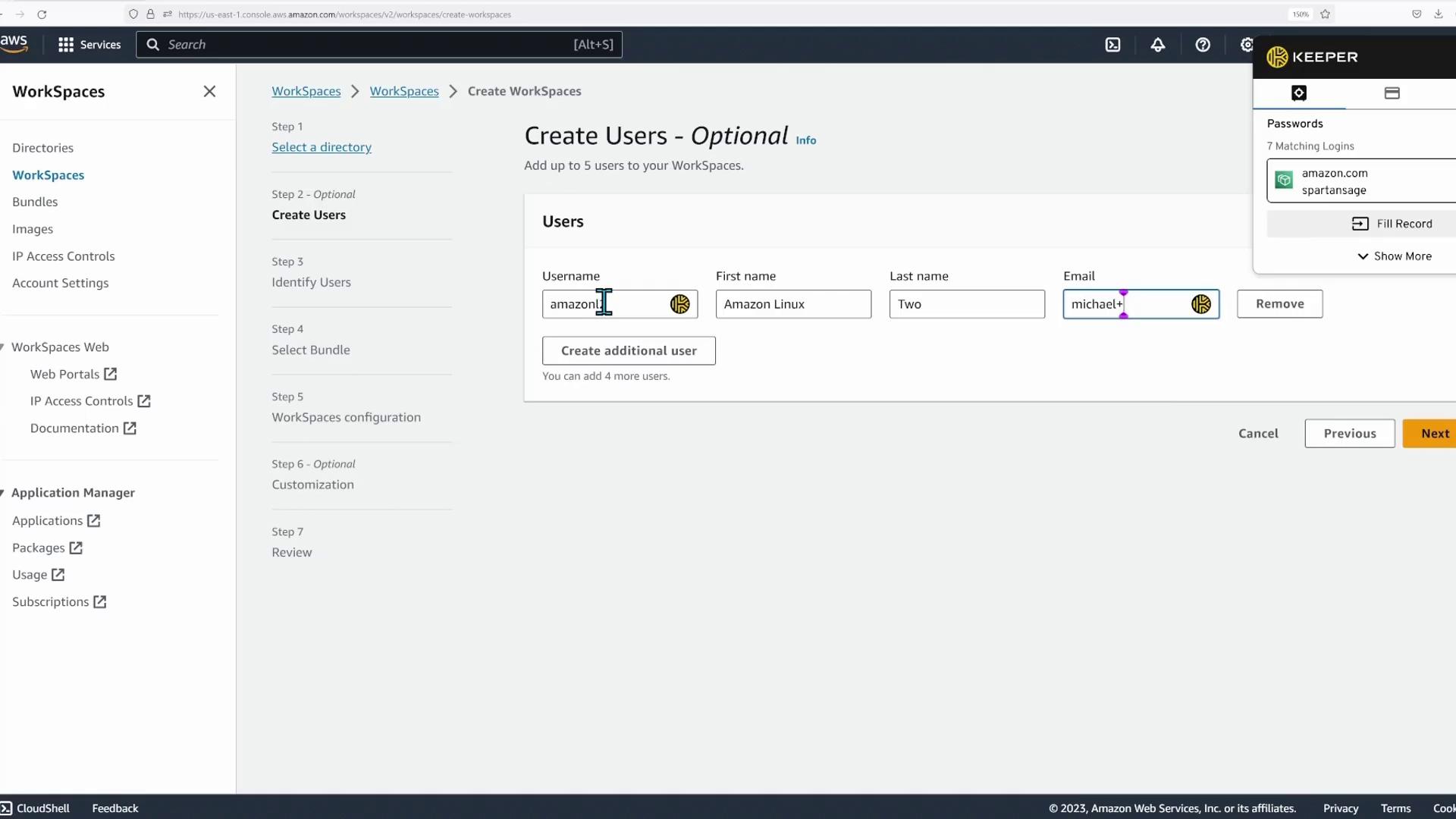
After creating the user, verify its presence along with other users (such as mForrester and Ubuntu) in the directory and then click Next.
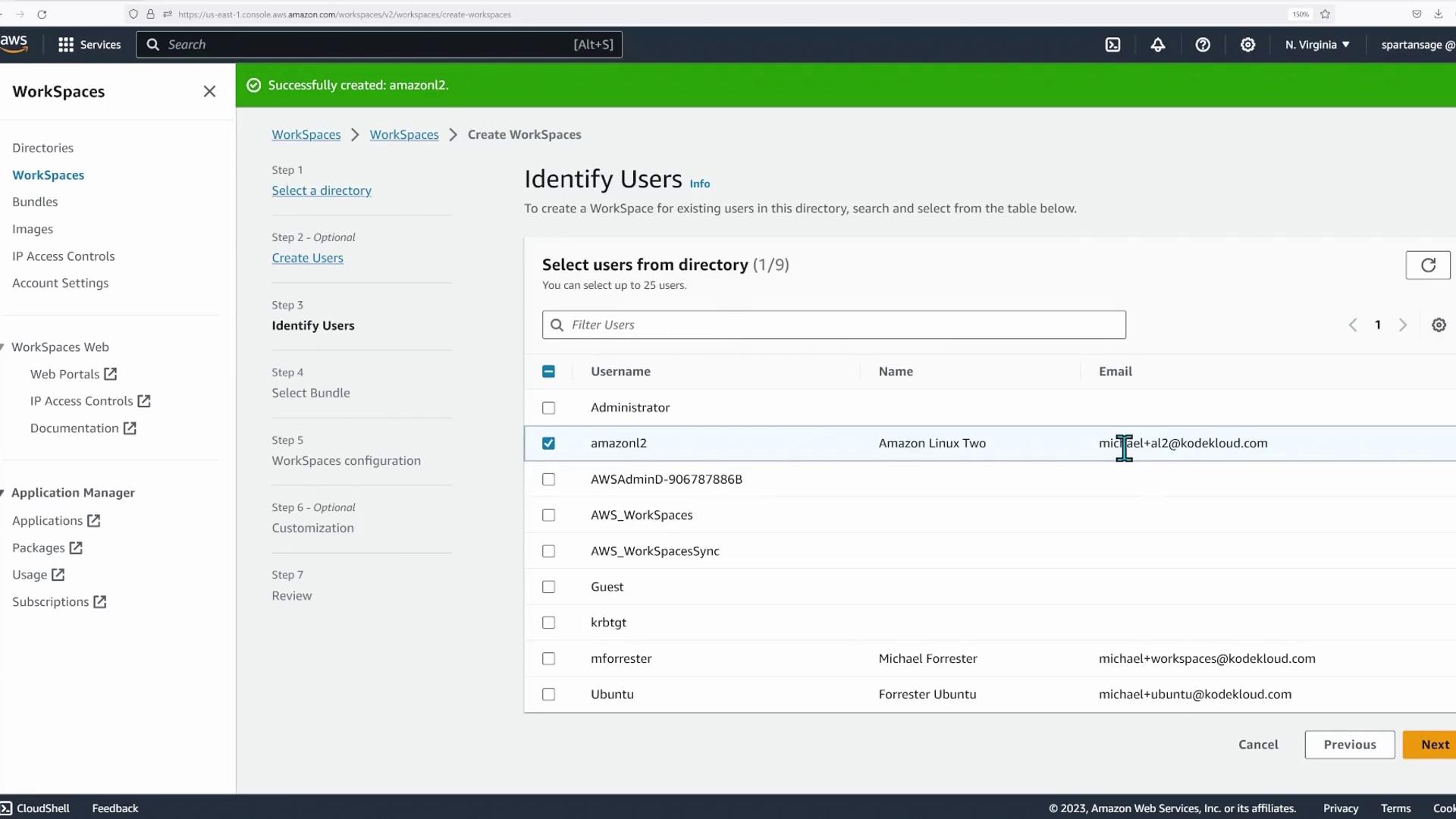
Selecting a Bundle and Operating System
In the next phase of the configuration, you need to choose a system bundle. The available bundles include:
- Value: 1 CPU, 2 GB memory
- Standard
- Performance
- Power: 4 vCPUs, 16 GB memory (selected for this demo)
- PowerPro: 8 vCPUs, 32 GB memory
- GPU-enabled options: Various configurations, including one with 122 GB memory and a dedicated virtual GPU
For this demo, the "Power" bundle was chosen for its balanced performance. Although the user is named after Amazon Linux, the demo opts for the Ubuntu operating system. Additionally, the WorkSpace is configured to auto-stop after one hour, and tag configuration is skipped to streamline the setup.

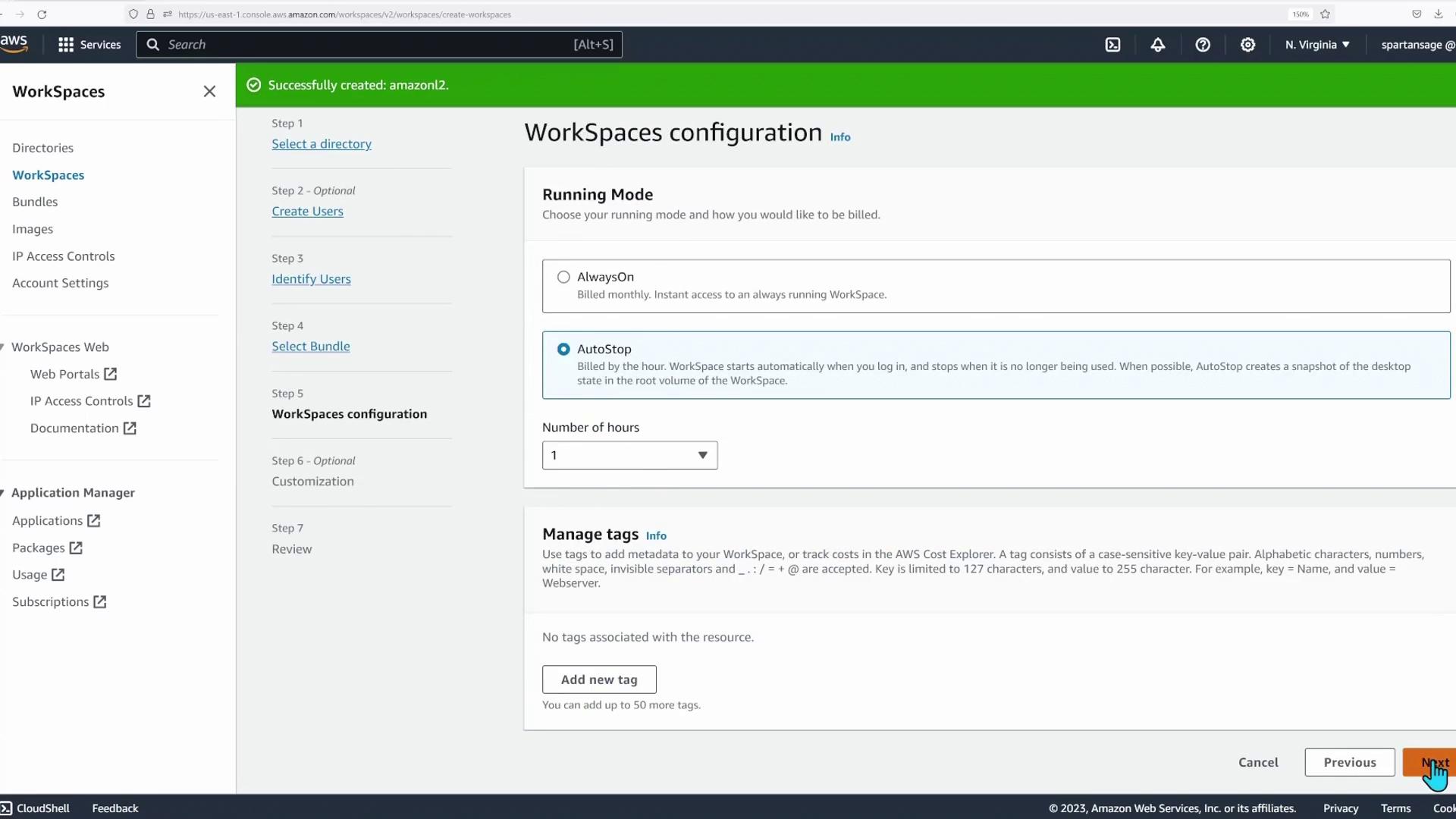
After reviewing the selected settings, click Create. Note that new WorkSpaces typically take around 20 minutes to become fully active. In this demo, two WorkSpaces were preloaded, providing immediate visual feedback without a long wait period.
Workspace Status and Invitation
Once the WorkSpaces are created, you'll notice that one might be in an available state while another still shows as pending. For instance, the WorkSpace configured with Amazon Linux might remain pending for a short time, whereas another (such as one running Windows Server) may be available. Select an available WorkSpace to proceed with connecting.
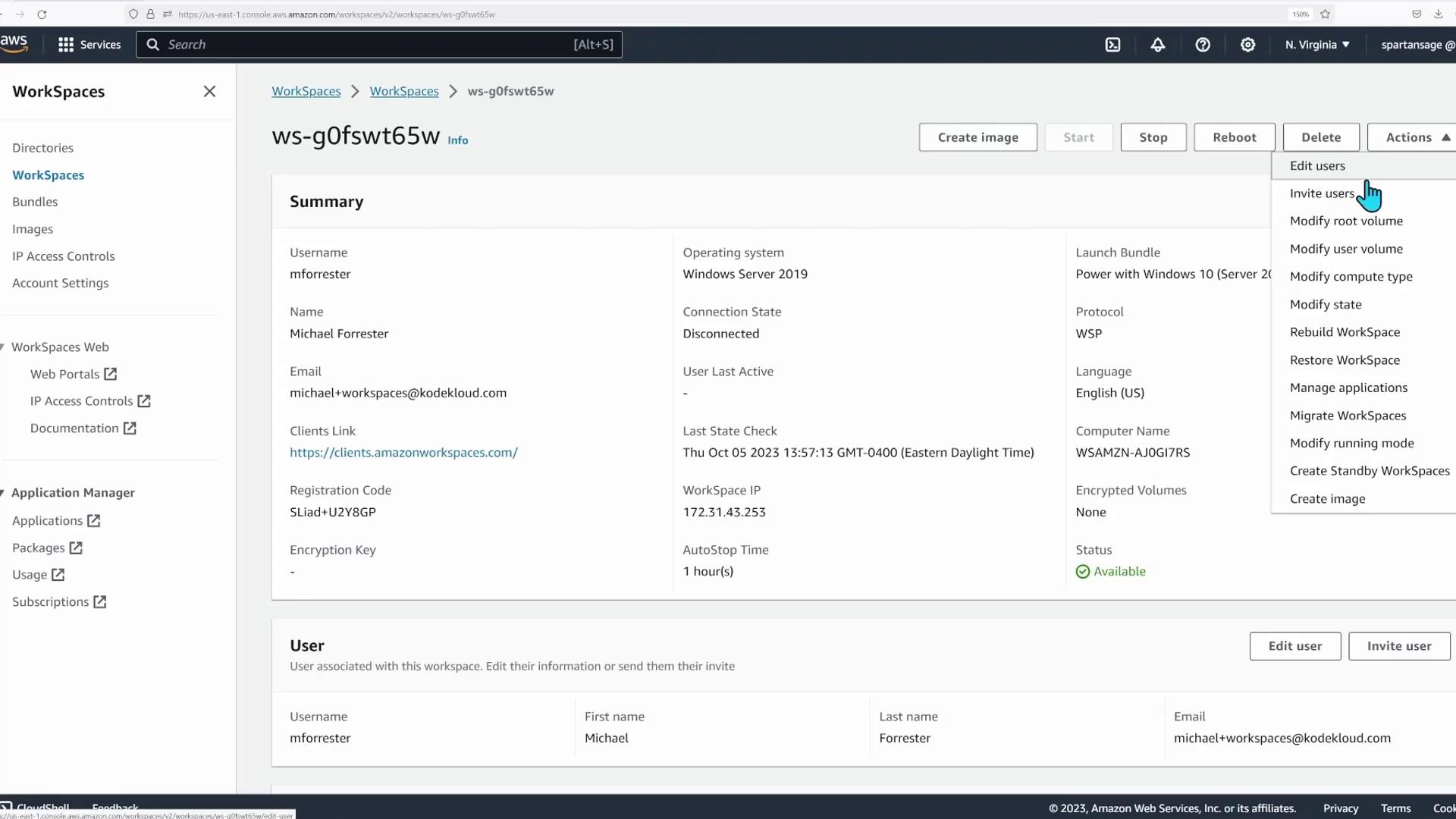
Next, click the Invite Users action. AWS provides a registration code that is needed to access the WorkSpace. Copy the code and note that the associated username is “Enforcer.”
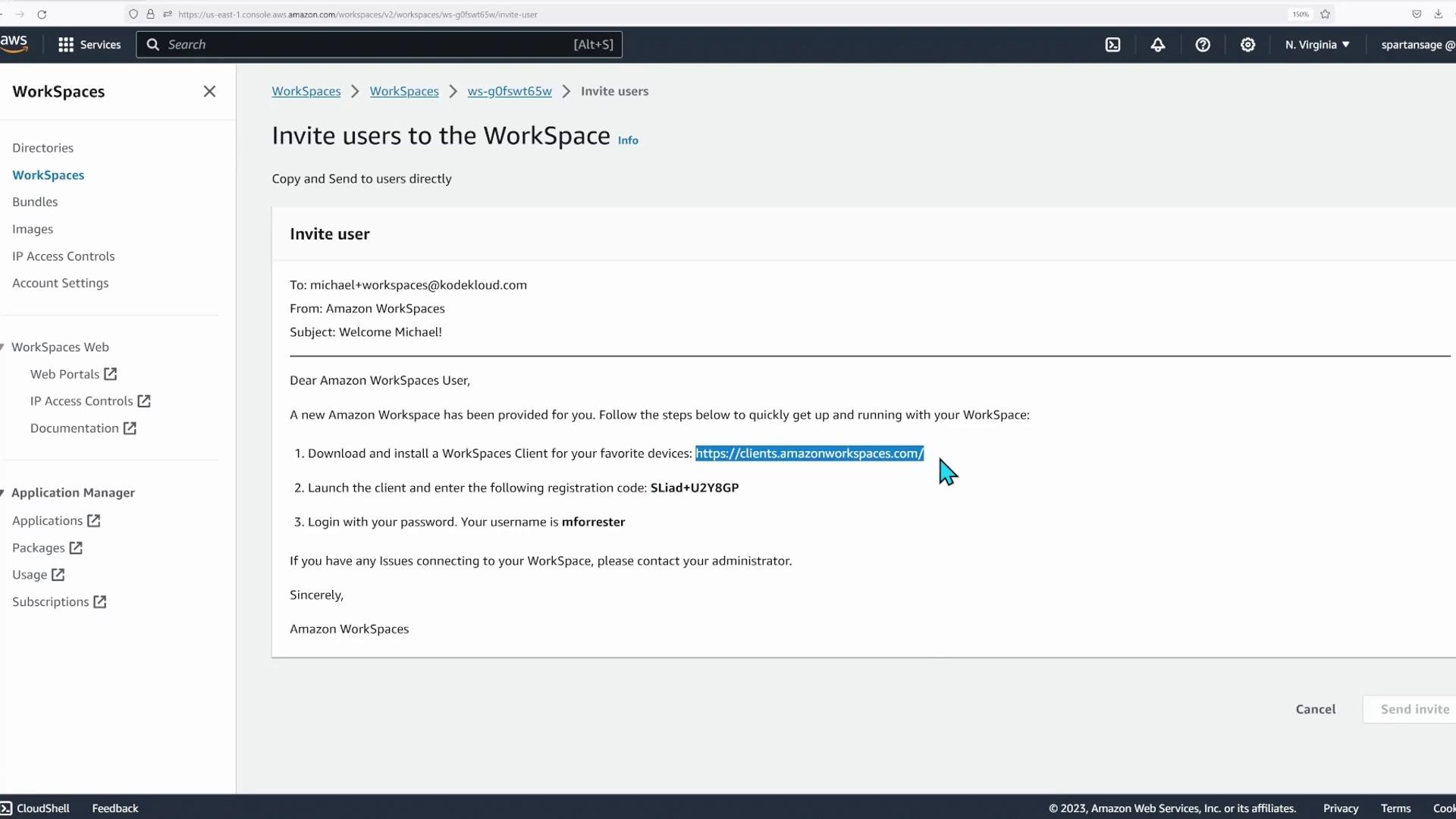
Right-click the provided link and proceed with the invitation process. With the WorkSpaces client already installed, open the application and register your WorkSpace using the registration code. After confirming that the username “Enforcer” is correctly set and entering the correct credentials, the client establishes a connection.
Once connected, the WorkSpace applies personalized settings, logs you into the virtual desktop hosted on AWS, and allows you to install and run your applications as if you were using a local machine.
Testing the Virtual Desktop
Inside the virtual desktop, launch Firefox to assess network performance. Running an internet speed test reveals that the connection speed significantly exceeds typical desktop network speeds. The results demonstrate speeds that are well above standard Ethernet limits, likely powered by high-speed network backplanes.
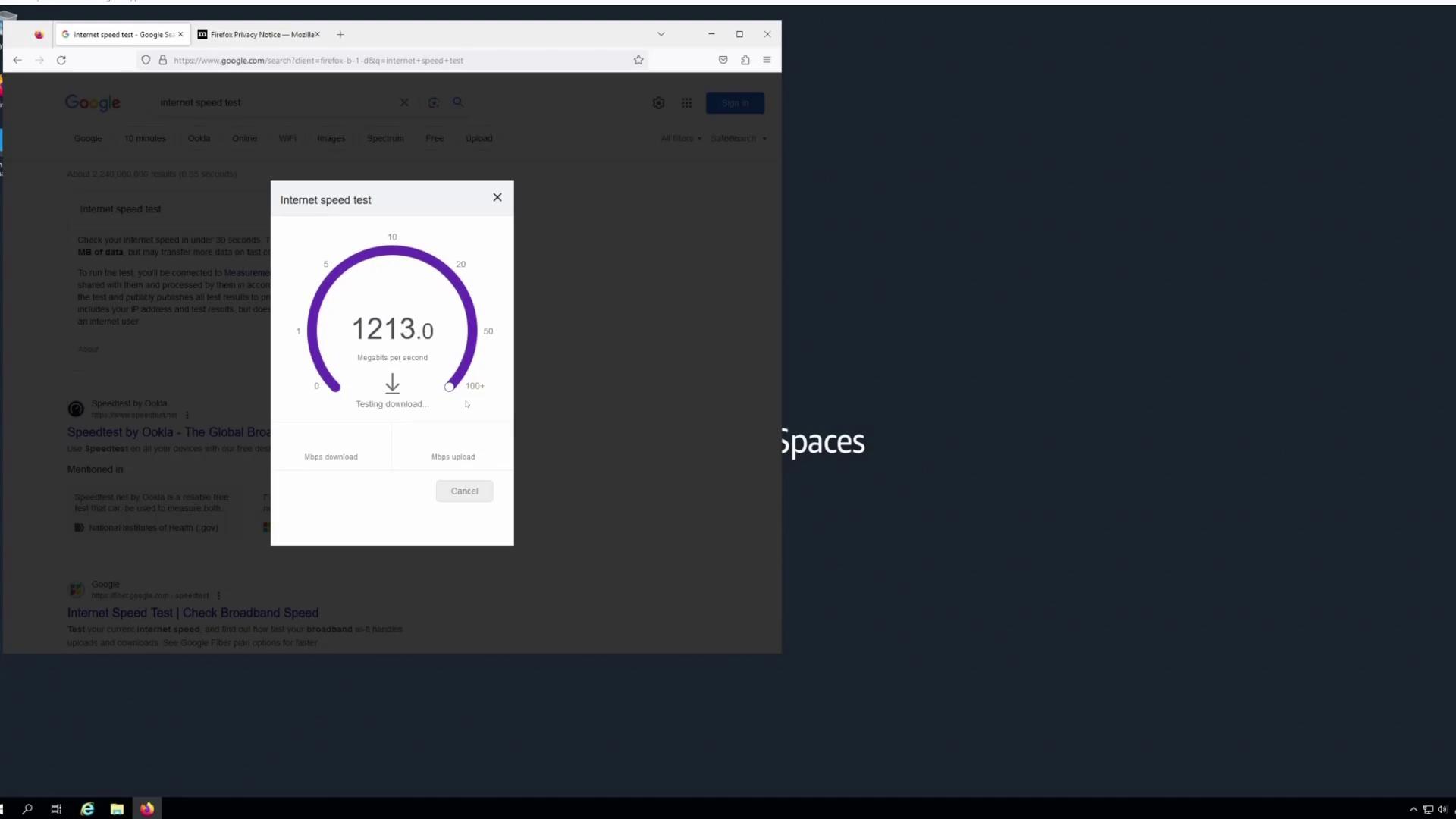
A subsequent test confirms similar results:
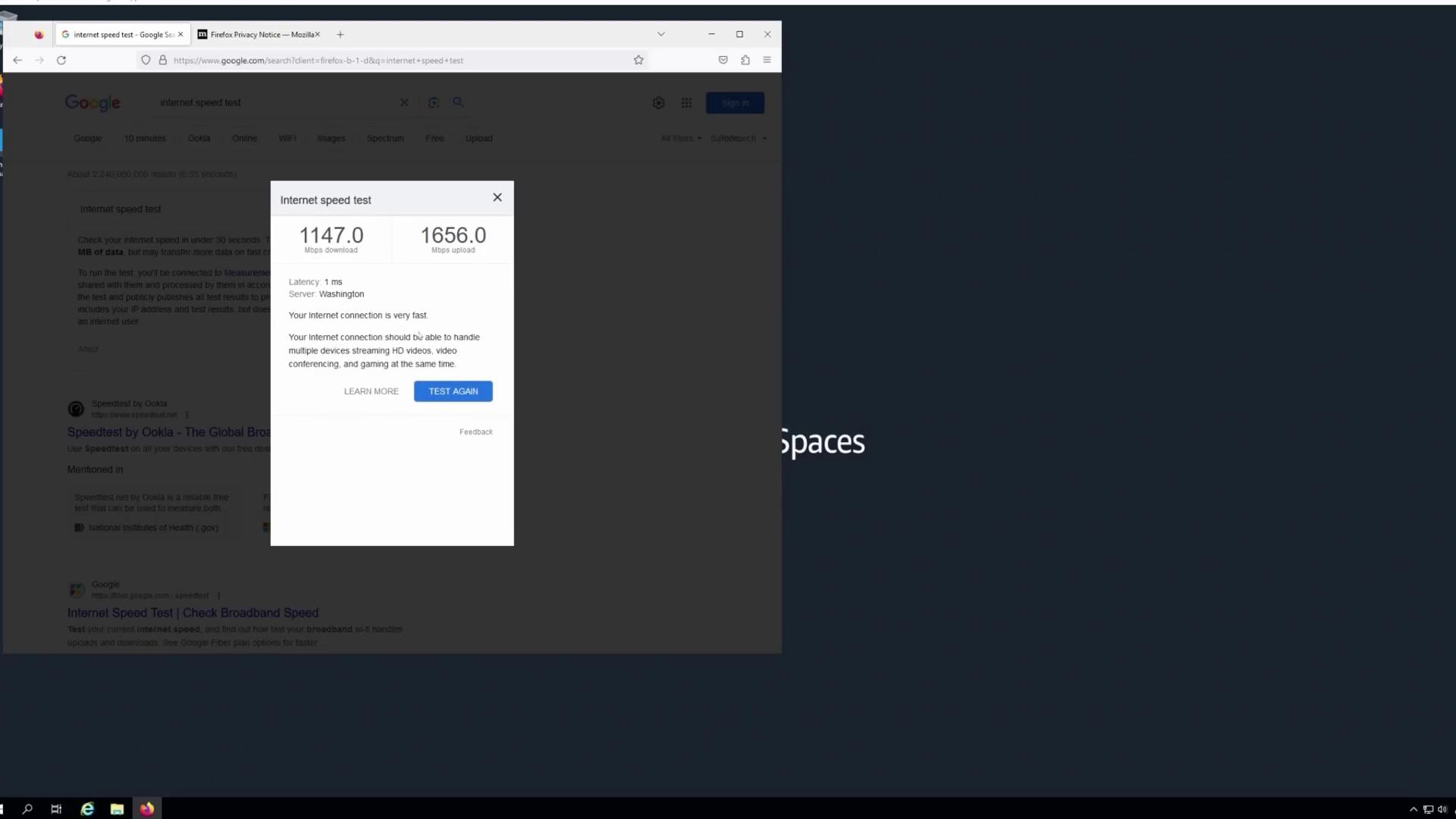
Quick Tip
For a smooth user experience, remember to customize your virtual desktop settings and install only the necessary software, enhancing both security and performance.
This confirms that Amazon WorkSpaces delivers a powerful and responsive virtual desktop experience.
Conclusion
This demo showcased the process of setting up and connecting to an Amazon WorkSpace—from configuring directories and creating users to selecting hardware bundles and testing network speeds. Once connected, you gain access to a full-featured virtual desktop in AWS where you can seamlessly install and run your applications.
For more information, explore the following resources:
Thank you for reading, and we look forward to sharing more cloud computing insights in our next article.
Watch Video
Watch video content